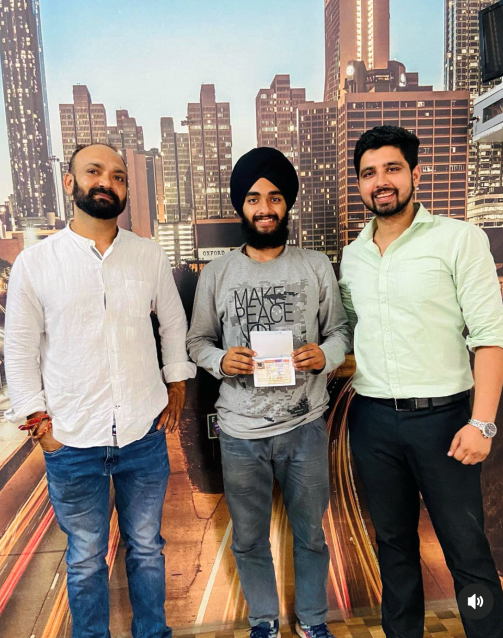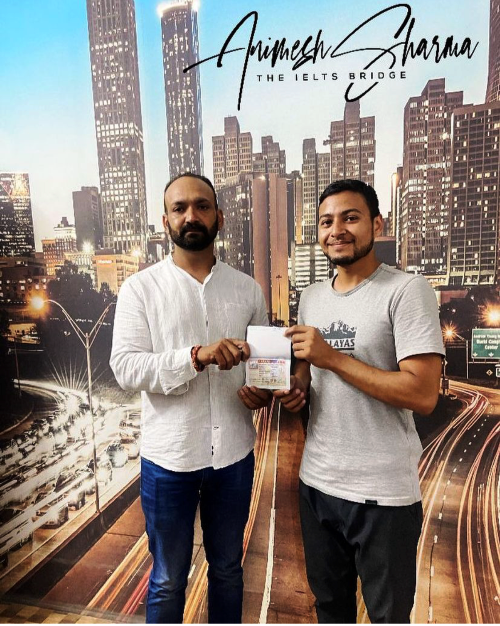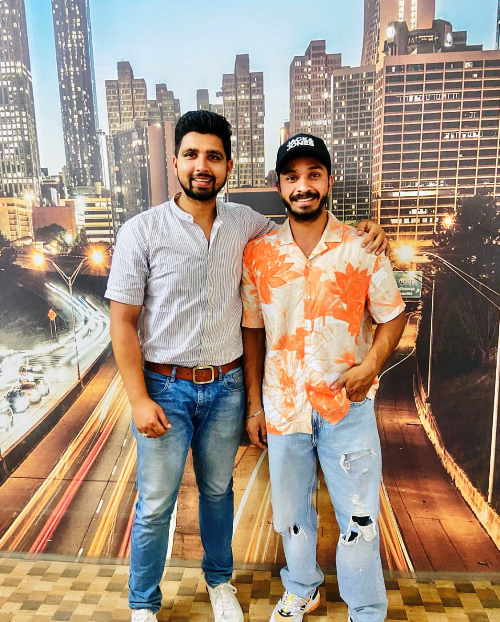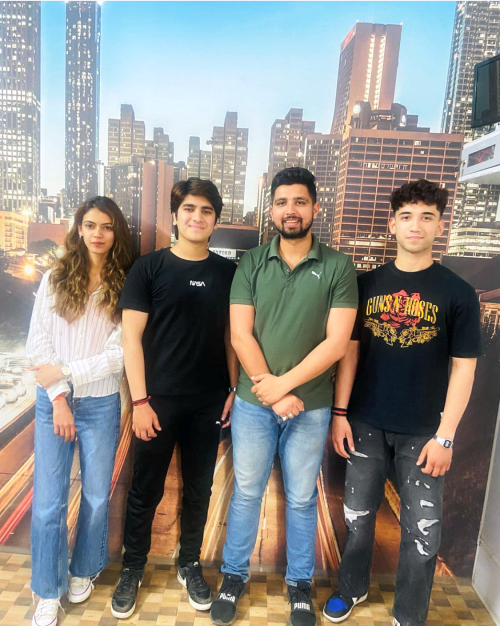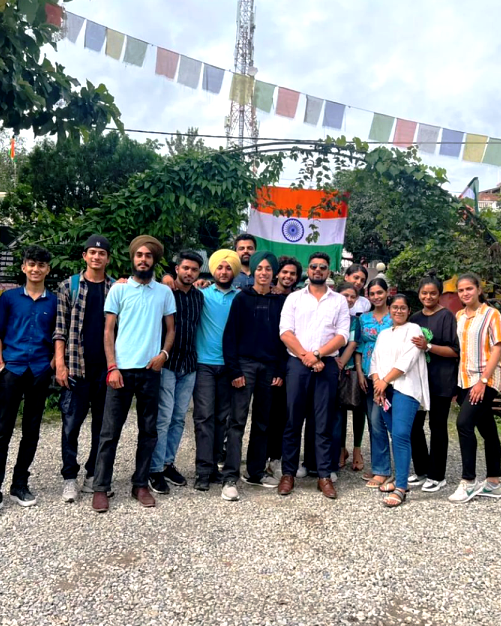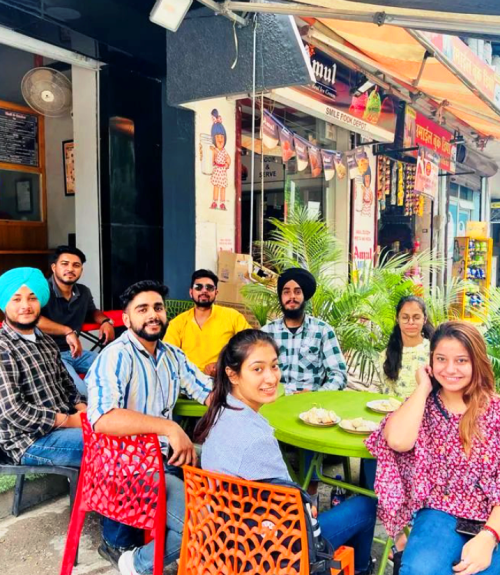Reading Passage 1: How much higher? How much faster?
Questions 1-3: TRUE, FALSE, NOT GIVEN
[In this type of question, candidates are asked to find out whether:
The statement in the question agrees with the information in the passage – TRUE
The statement in the question contradicts with the information in the passage – FALSE
If there is no information on this – NOT GIVEN
For this type of question, you can divide each statement into three independent pieces and make your way through with the answer.]
Question no. 1: Modern official athletic records date from about 1900.
Keywords for the question: modern official athletic records, date, about 1900,
The very first lines of paragraph no. 1 give us the answer to this question. The author says here, “Since the early years of the twentieth century, when the International Athletic Federation began keeping records, . … .”
Here, Since the early years of the twentieth century = date from about 1900, began keeping records = records,
The lines are a clear match with the question.
So, the answer is: TRUE
Question no. 2: There was little improvement in athletic performance before the twentieth century.
Keywords for the question: little improvement, athletic performance, before, twentieth century,
In lines 5-12 of paragraph no. 1, the author says, “ . .. . there has been a steady improvement in how fast athletes run, how high they jump and how far they are able to hurl massive objects, themselves included, through space. .. .”
Here, there has been a steady improvement = there has been slow progress,
However, it doesn’t mean little improvement. Also, there is NO INFORMATION about ‘before twentieth century’.
So, the answer is: NOT GIVEN
Question no. 3: Performance has improved most greatly in events requiring an intensive burst of energy.
Keywords for the question: performance, improved, most greatly, events, requiring, intensive burst of energy,
In paragraph no. 1, in lines 12-17, the author says, “ . . .. For the so-called power events – that require a relatively brief, explosive release of energy, like the 100-metre sprint and the long jump – times and distances have improved ten to twenty percent. .. . .”
Here, explosive release of energy = intensive burst of energy,
times and distances have improved = performance HAS NOT improved,
ten to twenty percent = most greatly,
So, the answer is: FALSE
Question no. 4: Improvements in athletic performance can be fully explained by genetics.
Keywords for the question: improvements, athletic performance, can be fully explained, by genetics,
In the second paragraph, take a look at the first few lines, “No one theory can explain improvements in performance, but the most important factor has been genetics. .. ..”
The lines suggest that genetics can explain a lot about athletic performance, but it CANNOT fully explain it.
So, the answer is: FALSE
Question no. 5: The parents of top athletes have often been successful athletes themselves.
Keywords for the question: parents of top athletes, often been successful athletes themselves,
Paragraph B talks about ‘parents’. However, there is NO INFORMATION about the performance of parents of top athletes.
So, the answer is: NOT GIVEN
Question no. 6: The growing international importance of athletics means that gifted athletes can be recognised at a younger age.
Keywords for the question: growing international importance, athletics, means, gifted athletes, can be recognised, at a younger age,
Lines 8-13 of paragraph no. 2 mention, “ . . . but with increasing global participation in athletics – and greater rewards to tempt athletes – it is more likely that individuals possessing the unique complement of genes for athletic performance can be identified early. .. .. .”
Here, with increasing global participation in athletics = growing international importance of athletics means, individuals possessing the unique complement of genes = gifted athletes, can be identified early = can be recognised at a younger age,
So, the answer is: TRUE
Question 7-10: Completing sentences with ONE WORD ONLY:
In this type of question, candidates are asked to write maximum two words to complete sentences on the given topic. For this type of question, first, skim the passage to find the keywords in the paragraph concerned with the answer, and then scan to find the exact word.
[TIPS: Here scanning technique will come in handy. Target the keywords of the questions to find the answers. Remember to focus on Proper nouns, random Capital letters, numbers, special characters of text etc.]
Question no. 7: According to Professor Yessis, American runners are relying for their current success on _________.
Keywords for the question: Professor Yessis, American runners, relying for their current success on,
In paragraph no. 3, we find Professor Yessis’ comments on American runners. Here, in lines 8-10, the author says, “ . .. . . Yesis believes that U.S. runners, despite their impressive achievements, are ‘running on their genetics’. .. ..”
Here, U.S. runners = American runners, their impressive achievements = their current success, running on = relying on,
So, the answer is: genetics
Question no. 8: Yessis describes a training approach from the former Soviet Union that aims to develop an athlete’s ________.
Keywords for the question: Yessis, describes, a training approach, from, former Soviet Union, aims to develop, an athlete’s,
To locate the answer, we have to take a close look at the end of paragraph no. 3 and the beginning of paragraph no. 4.
First, the writer says in lines 10-15 of paragraph no. 3, “ . .. . By applying more scientific methods, ‘they’re going to go much faster’. These methods include strength training that duplicates what they are doing in their running events as well as plyometrics, a technique pioneered in the former Soviet Union.”
Here, plyometrics, a technique pioneered in the former Soviet Union = a training approach from the former Soviet Union,
focuses on increasing = aims to develop,
Then, in lines 1-4 of paragraph no. 4, the writer says, “Whereas most exercises are designed to build up strength or endurance, plyometrics focuses on increasing power – the rate at which an athlete can expend energy. .. . ..”
So, the answer is: power
Question no. 9: Yessis links an inadequate diet to __________.
Keywords for the question: Yessis, links, inadequate diet, to,
The answer to this question can be found in lines 2-7 of paragraph no. 5, “ . .. . . ‘Many athletes are not getting the best nutrition, even through supplements,’ Yessis insists. Each activity has its own nutritional needs. Few coaches, for instance, understand how deficiencies in trace minerals can lead to injuries.”
Here, Yessis insists = Yessis links, deficiencies in trace minerals = an inadequate diet,
So, the answer is: injuries
Question no. 10: Yessis claims that the key to setting new records is better ___________.
Keywords for the question: Yessis, claims, key to setting new records, better,
The answer lies in paragraph no. 6. Here, in lines 4-10, the writer says, “ . .. . Yessis asserts, ‘they would be breaking records left and right.’ He will not predict by how much, however: ‘Exactly what the limits are it’s hard to say, but there will be increases even if only by hundredths of a second, as long as our training continues to improve.’
Here, Yessis asserts = Yessis links,
continues to improve = better,
they would be breaking records left and right & there will be increases even if only by hundredths of a second = setting new records,
So, the answer is: training
Question 11-13: Multiple choice questions
[This type of question asks you to choose a suitable answer from the options using the knowledge you gained from the passage. Generally, this question is set found as the last question set in most passages so you should not worry much about it. Finding all the answers to previous questions gives you a good idea about these questions.]
Question no. 11: Biomechanics films are proving particularly useful because they enable trainers to –
Keywords for the question: Biomechanics films, proving, particularly useful, because, enables, trainers,
In paragraph no. 7, lines 3-9 say, “. . .. . A biomechanic films an athlete in action and then digitizes her performance, recording the motion of every joint and limb in three dimensions. By applying Newton’s law to these motions, ‘we can say that this athlete’s run is not fast enough; that this one is not using his arms strongly enough during take-off,’ .. ..”
Here, we can say that this athlete’s run is not fast enough; that this one is not using his arms strongly enough during take-off = highlight areas for improvement in athletes,
So, the answer is: A (highlight areas for improvement in athletes.)
Question no. 12: Biomechanics specialists used theoretical models to –
Keywords for the question: Biomechanics specialists, used, theoretical models,
In paragraph no. 8, lines 2-14 state, “. .. . . For example, during the 1968 Olympics in Mexico City, a relatively unknown high jumper named Dick Fosbury won the gold by going over the bar backwards, in complete contradiction of all the received high-jumping wisdom, a move instantly dubbed the Fosbury flop. Fosbury himself did not know what he was doing. That understanding took the later analysis of biomechanics specialists, who put their minds to comprehending something that was too complex and unorthodox ever to have been invented through their own mathematical simulations. .. . .”
Here, the later analysis of biomechanics specialists . .. . invented through their own mathematical simulations = Biomechanics specialists used theoretical models,
These lines suggest that biomechanics specialists used their own theoretical models to explain the Fosbury flop.
So, the answer is: D (explain the Fosbury flop.)
Question no. 13: John S. Raglin believes our current knowledge of athletics is –
Keywords for the question: John S. Raglin, believes, our current knowledge, athletics,
In the final paragraph (paragraph no. 9), we find about John S. Raglin. Here, in lines 9-10, Raglin says, “ . .. .. and our understanding in many cases is fundamental. .. . .”
Here, our understanding = our current knowledge, fundamental = basic, So, the answer is: B (basic.)
Reading Passage 2: THE NATURE AND AIMS OF ARCHAEOLOGY
Questions 14-19: YES, NO, NOT GIVEN:
[In this type of question, candidates are asked to find out whether:
The statement in the question matches with the claim of the writer in the text- YESThe statement in the question contradicts with the claim of the writer in the text- NOThe statement in the question has no clear connection with the account in the text- NOT GIVEN
TIPS: For this type of question, you can divide each statement into three independent pieces and make your way through with the answer.]
Question no. 14: Archaeology involves creativity as well as careful investigative work.
Keywords for the question: Archaeology, involves, creativity, careful investigative work,
Take a look at the very first lines of the first paragraph. The writer says here, “Archaeology is partly the discovery of the treasures of the past, partly the careful work of the scientific analyst, partly the exercise of the creative imagination. .. .. .”
Here, careful work of the scientific analyst = careful investigative work, exercise of the creative imagination = creativity,
So, the answer is: YES
Question no. 15: Archaeologists must be able to translate texts from ancient languages.
Keywords for the question: Archaeologists, must be able, translate, texts, ancient languages,
This passage doesn’t contain any information about the ability of archaeologists to translate texts from ancient languages.
So, the answer is: NOT GIVEN
Question no. 16: Movies give a realistic picture of the work of archaeologists.
Keywords for the question: Movies, give, realistic picture, work of archaeologists,
In lines 2-6 of paragraph no. 2, the author of the passage says, “ .. . . The rich mixture of danger and detective work has also made it the perfect vehicle for fiction writers and film-makers, from Agatha Christie with Murder in Mesopotamia to Stephen Spielberg with Indiana Jones. However, far from reality such portrayals are, they capture the essential truth that archaeology is an exciting quest – the quest for knowledge about ourselves and our past.”
Here, Stephen Spielberg with Indiana Jones = movies, far from reality = unrealistic picture,
So, the answer is: NO
Question no. 17: Anthropologists define culture in more than one way.
Keywords for the question: Anthropologists, define, culture, more than one way,
Lines 2-4 in paragraph no. 4 say, “. . . . Culture in this sense includes what the anthropologist, Edward Tylor, summarised in 1871 as ‘knowledge, belief, art, morals, custom and any other capabilities and habits acquired by man as a member of society’. .. . .”
Here, summarised = defined,
knowledge, belief, art, morals, custom and any other capabilities and habits = definition of culture in more than one way,
So, the answer is: YES
Question no. 18: Archaeology is a more demanding field of study than anthropology.
Keywords for the question: Archaeology, more demanding field of study, than, anthropology,
This passage talks in details about both archaeology and anthropology. However, we do not find any information about the comparison of importance to study the subjects.
So, the answer is: NOT GIVEN
Question no. 19: The history of Europe has been documented since 3,000 BC.
Keywords for the question: history of Europe, documented, since, 3,000 BC,
Paragraph no. 8 has the answer to this question. The writer says here, in lines 5-7, “ . .. . Conventional historical sources begin only with the introduction of written records around 3,000 BC in western Asia, and much later in most other parts of the world.”
Here, introduction of written records = documented since 3000 BC, western Asia = NOT Europe,
So, the answer is: NO
Questions 20-23: Choosing TWO options from given list
[In this kind of question candidates have to choose two or three answers for each question from five or six options. The answers will not follow any sequential order as they are randomly spread in the text, so this question will be time-consuming. Skimming will come in handy and previous reading of the text can come in use. Therefore, other questions should be done first before answering this question.]
Questions 20-21: The list below gives some statements about anthropology.
Which TWO statements are mentioned by the writer of the text?
Keywords for the question: anthropology,
First, read these lines from paragraph no. 4, “ . . . . Anthropology is thus a broad discipline – so broad that it is generally broken down into three smaller disciplines: physical anthropology, cultural anthropology and archaeology.”
Here, generally broken down into three smaller disciplines = subdivided for study purposes,
And then, take a look at the first few lines of paragraph no. 5, “Physical anthropology, or biological anthropology as it is also called, concerns the study of human biological or physical characteristics and how they evolved. . .. .”
Here, human biological or physical characteristics and how they evolved = human evolutionary patterns,
So, the answers are: (in any order)
D (It is subdivided for study purposes),
E (It studies human evolutionary patterns),
Questions 22-23: The list below gives some of the tasks of an archaeologist.
Which TWO of these tasks are mentioned by the writer of the text?
Keywords for the question: some of the tasks of an archaeologist,
The answers can be found in lines 5-7 of paragraph no. 7. The writer of the passage says here, “. .. .. but with the specific purpose of learning how such societies use material culture – how they make their tools and weapons, why they build their settlements where they do, and so on. .. . .”
Here, how they make their tools and weapons, why they build their settlements where they do = deducing reasons for the shape of domestic buildings,
And, purpose of learning how such societies use material culture = deducing reasons for the shape of domestic buildings,
So, the answers are: (in any order)
C (deducing reasons for the shape of domestic buildings),
D (investigating the way different cultures make and use objects),
Questions 24-27: Summary completion
[In this kind of questions candidates are given a summary for one, two, or three paragraphs with some fill in the blanks questions. Candidates need to find out the related paragraphs by correctly studying the keywords from the questions. Then, they should follow the steps of finding answers to fill in the gaps.]
Question no. 24: Much of the work of archaeologists can be done using written records but they find __________ equally valuable.
Keywords for the question: much of the work, archaeologists, can be done, using, written records, but, find, equally valuable,
The answer can be traced in lines 4-5 of paragraph no. 9, as the writer explains, “. .. . the distinction between history and pre-history is a convenient dividing line that recognises the importance of the written word, but in no way lessens the importance of the useful information contained in oral histories.”
Here, recognises the importance of the written word = Much of the work of archaeologists can be done using written records, in no way lessens the importance = equally valuable,
So, the answer is: oral histories
Questions no. 25 & 26: The writer describes archaeology as both a 25. _________ and a 26. _________.
Keywords for the question: writer, describes, archaeology, as, both,
In the first few lines of the final paragraph (paragraph no. 10), the author of the text says, “Since the aim of archaeology is the understanding of humankind, it is a humanistic study, and since it deals with the human past, it is a historical discipline. .. .”
Here, the aim of archaeology = the writer describes archaeology,
So, the answers are: (in any order)
humanistic study,
historical discipline,
Question no. 27: However, as archaeologists do not try to influence human behaviour, the writer compares their style of working to that of a _________.
Keywords for the question: However, as, archaeology, do not try to influence, human behaviour, writer, compares, their style of working, to,
In lines 4-6 of the final paragraph (paragraph no. 10), the writer explains, “ . .. . The objects the archaeologists discover, on the other hand, tell us nothing directly in themselves. In this respect, the practice of the archaeologist is rather like that of the scientist, who collects data, conducts experiments, formulates a hypothesis, tests the hypothesis against more data, . .. ..”
Here, The objects the archaeologists discover . . .. . tell us nothing directly in themselves = archaeologists do not try to influence human behaviour, rather like = the writer compares,
So, the answer is: scientist
Reading Passage 3: The Problem of Scarce Resources
Questions 28-31: List of headings
[In this question type, IELTS candidates are provided with a list of headings, usually identified with lower-case Roman numerals (i, ii, iii, etc,). A heading will refer to the main idea of the paragraph or section of the text. Candidates must find out the equivalent heading to the correct paragraphs or sections, which are marked with alphabets A, B, C and so forth. Candidates need to write the appropriate Roman numerals in the boxes on their answer sheets. There will always be two or three more headings than there are paragraphs or sections. So, some of the headings will not be used. It is also likely that some paragraphs or sections may not be included in the task. Generally, the first paragraph is an example paragraph that will be done for the candidates for their understanding of the task.
Tips to answer this question: Don’t read the list of headings first. Have a quick look at the questions, and go straight to the first question and start reading the paragraph associated with it. Skimming is the best reading technique. You need not understand every word here. Just try to gather the gist of the sentences. That’s all. Read quickly, and don’t stop until you finish each sentence.]
Question no. 28: Section A
In Section A, the author of the text says in lines 1-4, “The problem of how health-care resources should be allocated or apportioned, so that they are distributed in both, the most just and most efficient way, is not a new one. Every health system in an economically developed society is faced with the need to decide (either formally or informally). .. ..”
Here, faced with the need to decide = a problem, Every health system in an economically developed society = every economically developed country,
So, the answer is: iv (A problem shared by every economically developed country)
Question no. 29: Section C
The first half of Section C has the answer to this question. Here, the writer talks about ‘basic human rights’ and their connection to health-care. Let’s take a look at lines 4-7, “ . .. . Like education, political and legal processes and institutions, public order, communication, transport and money supply, health-care came to be seen as one of the fundamental social facilities necessary for people to exercise their other rights as autonomous human beings. .. .. .”
Here, Like = the connection, one of the fundamental social facilities = one of the human rights, their other rights = other human rights,
So, the answer is: i (The connection between health-care and other human rights)
Question no. 30: Section D
In Section D, lines 4-7 say, “ . . .. It is also accepted that this right generates an obligation or duty for the state to ensure that adequate health-care resources are provided out of the public purse. The state has no obligation to provide a health-care system itself, but to ensure that such a system is provided. .. .. .”
Here, an obligation or duty for the state = the role of the state, ensure = role,
So, the answer is: iii (The role of the state in health-care)
Question no. 31: Section E
Take a look at the first few lines of paragraph no. 1 in Section E. The author of the text says here in lines 2-4, “ .. .. . people were demanding that their fundamental right to health-care be satisfied by the state. The second set of more specific changes that have led to the present concern about the distribution of health-care resources .. .. .”
Here, people were demanding & more specific changes = recent changes,
Then, in lines 1-3 of paragraph no. 2, the author says, “As a consequence, during the 1980s a kind of doomsday scenario (analogous to similar doomsday extrapolations about energy needs and fossil fuels or about population increases) was projected by health administrators, economists and politicians. .. ..”
Here, As a consequence = the impact,
So, the answer is: v (The impact of recent change)
Questions 32-35: Classifying groups
[This type of question asks candidates to classify information from the given reading text. Candidates are given some groups from the text, and a list of options, which are listed as A, B, C etc. They must match the correct groups with the correct options.
N.B.: This question type doesn’t follow any sequence. So, they should be answered after all other questions in the passage.]
Question no. 32: the realisation that the resources of the national health systems were limited
Keywords for the question: realisation, resources, national health systems, were limited,
Question no. 33: a sharp rise in the cost of health-care
Keywords for the question: sharp rise, cost, health-care,
For these two questions, we need to go Section E.
Here, in the first paragraph, the writer says, “Just at the time when it became obvious that health-care resources could not possibly meet the demands being made upon them, people were demanding that their fundamental right to health-care be satisfied by the state. The second set of more specific changes that have led to the present concern about the n of health-care resources stems from the dramatic rise in health costs in most OECD countries, accompanied by large-scale demographic and social changes which have meant, to take one example, that elderly people are now major (and relatively very expensive) consumers of health-care resources. Thus in OECD countries as a whole, health costs increased from 3.8% of GDP in 1960 to 7% of GDP in 1980,
Here, Just at the time = between 1950 and 1980 (as indicated in the last line of this paragraph), it became obvious = the realisation, could not possibly meet the demands = were limited,
Then, at the end of the paragraph,
health costs increased from 3.8% of GDP in 1960 to 7% of GDP = a sharp rise in the cost of health-care ,
So, the answers are:
- B (between 1950 and 1980)
- B (between 1950 and 1980)
Question no. 34: a belief that all the health-care resources the community needed would be produced by economic growth
Keywords for the question: belief, all the health-care resources, community, needed, would be produced, economic growth,
The writer says in lines 4-7 of Section B, “ .. . . . Thus, in the 1950s and 1960s, there emerged an awareness in Western societies that resources for the provision of fossil fuel energy were finite and exhaustible and that the capacity of nature or the environment to sustain economic development and population was also finite. . .. ..” And then, in the last few lines, “ . .. it was assumed without question that all the basic health needs of any community could be satisfied, at least in principle; the ‘invisible hand’ of economic progress would provide.”
Here, in the 1950s and 1960s = between 1945 and 1950,
there emerged an awareness & it was assumed without question that = a belief,
Western societies = the community,
the ‘invisible hand’ of economic progress would provide = would be produced by economic growth,
So, the answer is: A (between 1945 and 1950)
Question no. 35: an acceptance of the role of the state in guaranteeing the provision of health-care
Keywords for the question: acceptance, role of the state, guaranteeing, provision of health-care,
In Section D, take a look at these lines at the beginning, “ . .. . by the late 1970s, it was recognised in most societies that people have a right to health-care (though there has been considerable resistance in the United States to the idea that there is a formal right to health-care). .. . ..”
Here, by the late 1970s = between 1950 and 1980, it was recognised = an acceptance, people have a right to health-care = the role of the state to guarantee the provision of health-care,
So, the answer is: B (between 1950 and 1980)
Questions 36-40: YES, NO, NOT GIVEN
[In this type of question, candidates are asked to find out whether:
The statement in the question matches with the claim of the writer in the text- YES
The statement in the question contradicts with the claim of the writer in the text- NO
The statement in the question has no clear connection with the account in the text- NOT GIVEN]
[TIPS: For this type of question, you can divide each statement into three independent pieces and make your way through with the answer.]
Question no. 36: Personal liberty and independence have never been regarded as directly linked to health-care.
Keywords for the question: personal liberty, independence, never been regarded, directly linked, health-care,
Let’s have a close look at Section C. Here, the author of the passage says in lines 7-9, “ . .. . People are not in a position to exercise personal liberty and to be self-determining if they are poverty-stricken, or deprived of basic education, or do not live within a context of law and order. .. .. .”
Here, People are not in a position = NO direct link to health-care, to be self-determining = independence,
The lines suggest that personal liberty and independence have never been considered as directly linked to health-care.
So, the answer is: NO
Question no. 37: Health-care came to be seen as a right at about the same time that the limits of health-care resources became evident.
Keywords for the question: health-care, came to be seen, a right, about the same time, limits of health-care resources, became evident,
The answer to this question can be traced in Section E, in the very first lines, “Just at the time when it became obvious that health-care resources could not possibly meet the demands being made upon them, people were demanding that their fundamental right to health-care be satisfied by the state. .. .”
Here, Just at the time = at about the same time, became obvious = became evident, health-care resources could not possibly meet the demands = the limits of health-care resources, people were demanding that their fundamental right to health-care = Health-care came to be seen as a right,
So, the answer is: YES
Question no. 38: In OECD countries population changes have had an impact on health-care costs in recent years.
Keywords for the question: OECD countries, population changes, had an impact, health-care costs, recent years,
Again, in Section E, lines 3-6 say, “ . . .. The second set of more specific changes that have led to the present concern about the distribution of health-care resources stems from the dramatic rise in health costs in most OECD countries, accompanied by large-scale demographic and social changes . . … ..”
Here, dramatic rise in health costs in most OECD countries = an impact on health-care costs, large-scale demographic = population changes,
So, the answer is: YES
Question no. 39: OECD governments have consistently underestimated the level of health-care provision needed.
Keywords for the question: OECD governments, consistently, underestimated, level of health-care provision, needed,
The information CANNOT BE FOUND in this passage (in Section E).
So, the answer is: NOT GIVEN
Question no. 40: In most economically developed countries the elderly will have to make special provision for their health-care in the future.
Keywords for the question: most economically developed countries, elderly, will have to make, special provision, their health-care, future,
The information CANNOT BE FOUND in this passage (in Section E).
So, the answer is: NOT GIVEN



